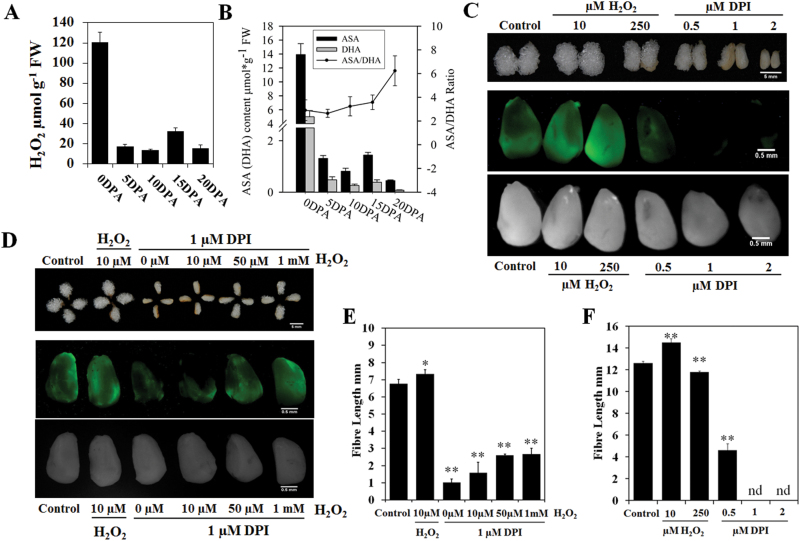Fig. 1.
The effect of H2O2 (hydrogen peroxide) levels on fibre elongation. (A) H2O2 contents in G. hirsutum ovules and fibres at different development stages (mean±SE, n=3). 0 DPA, 0 days post-anthesis (DPA) ovules; 5–20 DPA, 5–20 DPA fibres. (B) ASA (ascorbic acid) and DHA (dehydroascorbic acid) contents and ASA/DHA ratios in 0 DPA ovules, 5 DPA, 10 DPA, 15 DPA and 20 DPA fibres (mean±SD, n=3). (C) In vivo histochemical staining for ROS in 0 DPA ovules with 10 µM 2′,7′-DCFDA after treatments for 4h with different concentrations of H2O2 and DPI. The results were observed using stereo fluorescence microscopy. The upper panel shows the fibre growth after 10 days in culture with the different treatments; the middle panel shows fluorescence images; the lower panel shows bright field images. (D) The ability of H2O2 to rescue the 1 µM DPI-induced suppression of fibre elongation. The upper panel shows fibre growth after 7 days in culture with the different treatments; the middle panel shows fluorescence images with in vivo histochemical staining of ROS in 0 DPA ovules with 10 µM 2′,7′-DCFDA after treatments for 4h with different concentrations of DPI and H2O2; the lower panel shows bright field images. (E, F) The fibre lengths in response to the different treatments in D and C (n=3; Student’s t test; significant differences compared with the control: *P<0.05, **P<0.01).

